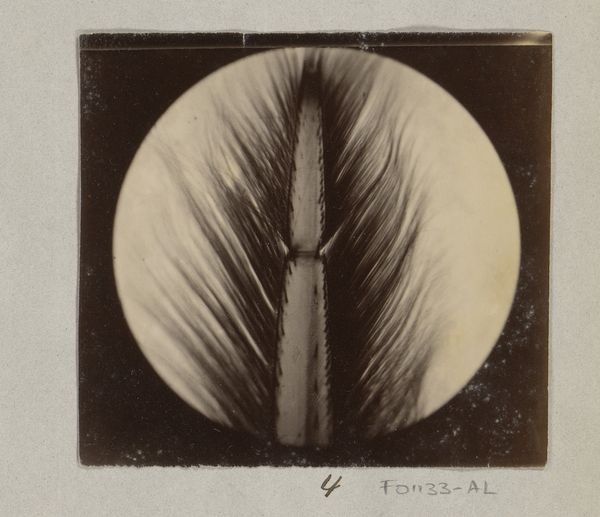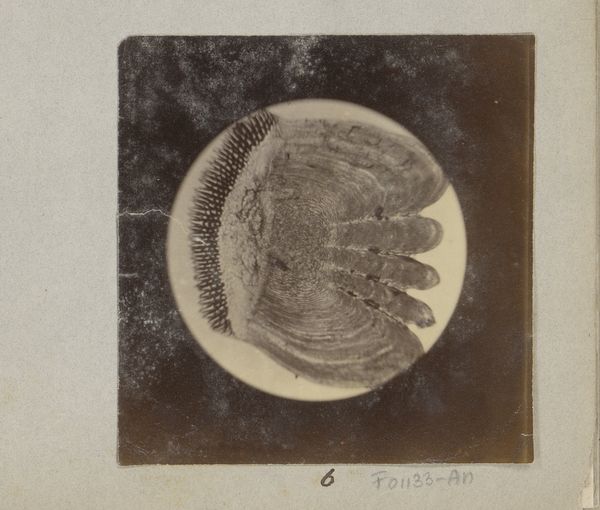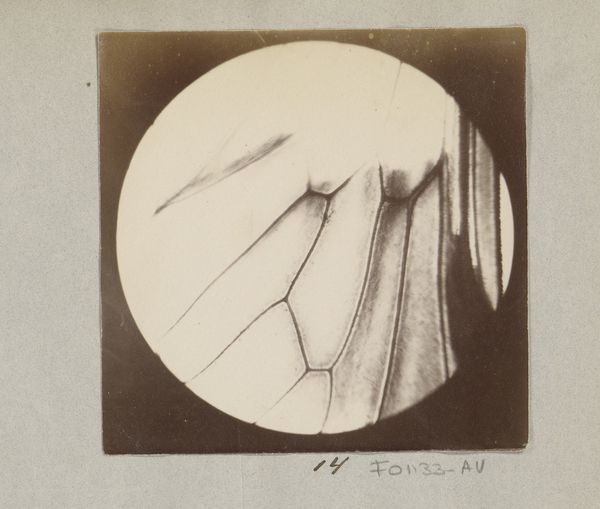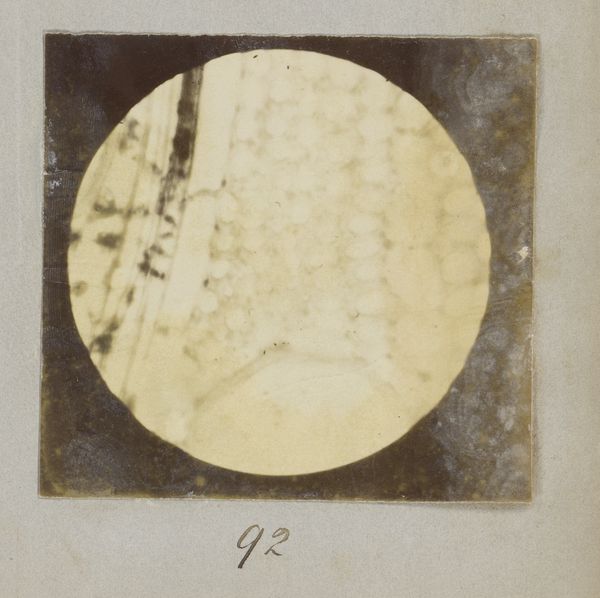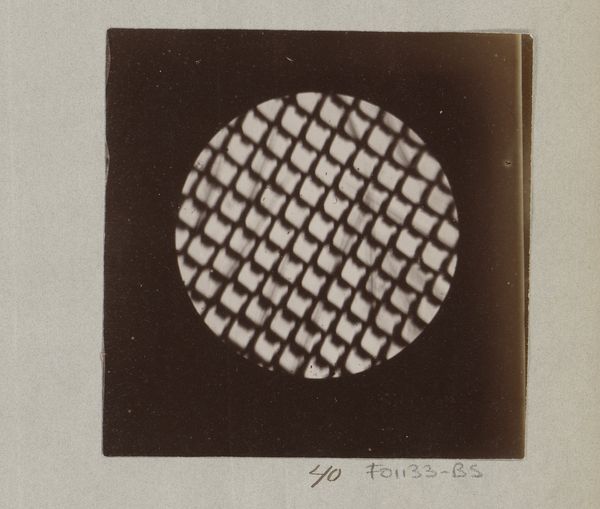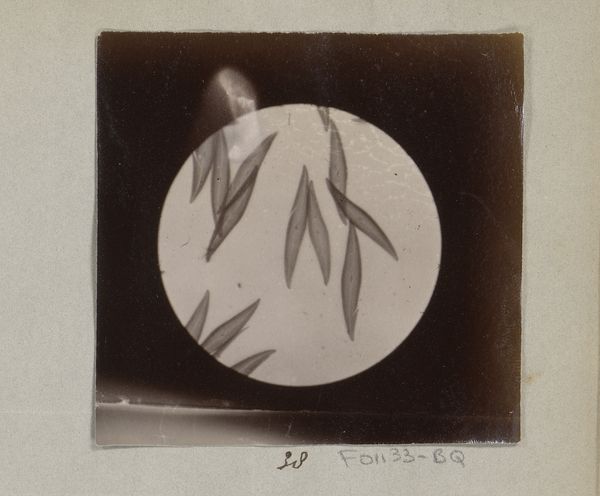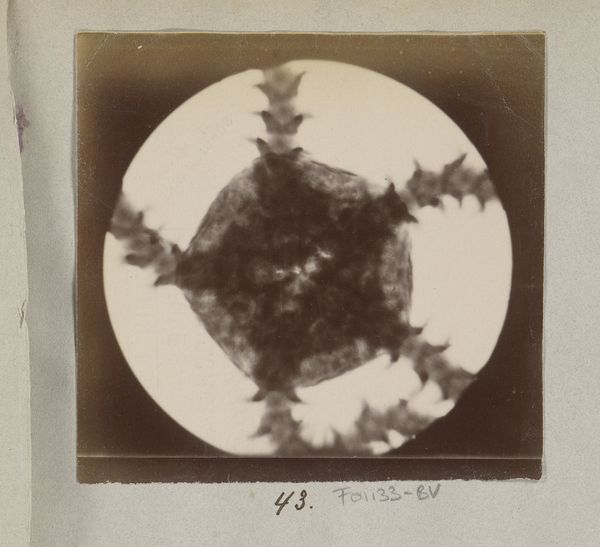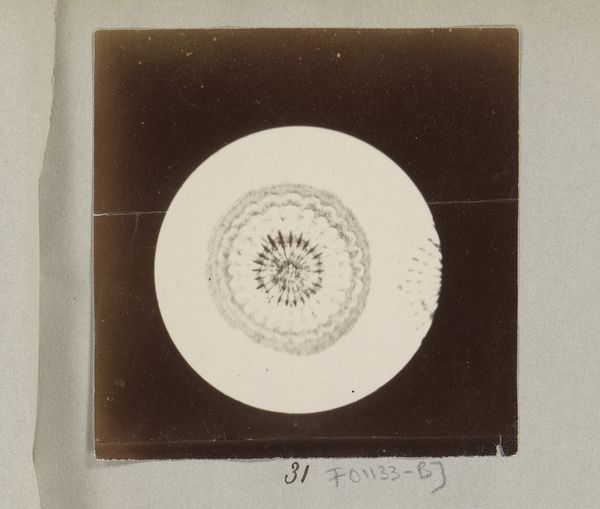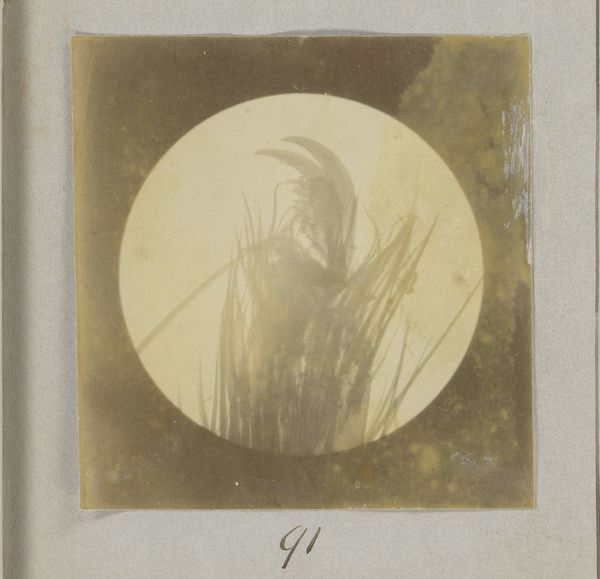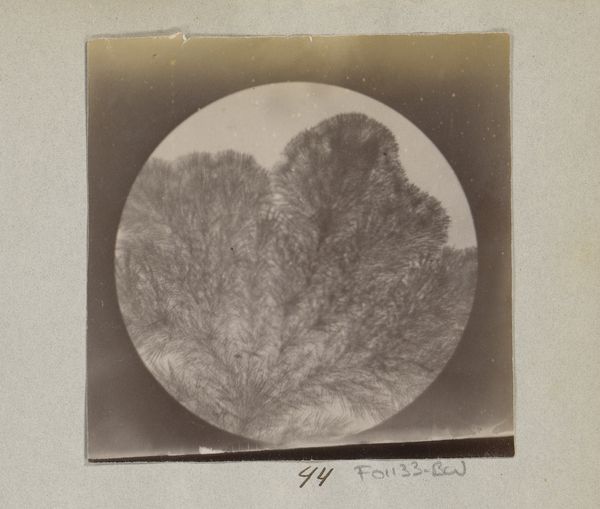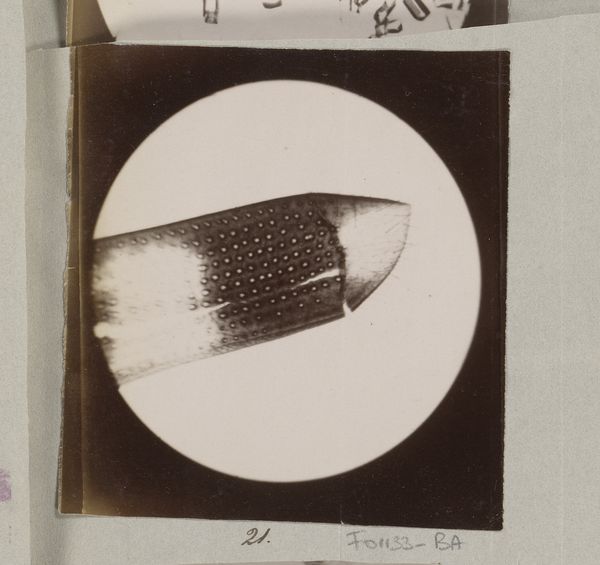
Microscopische opname van veer van een kolibrie, 25 keer vergroot 1887 - 1888
0:00
0:00
photography, gelatin-silver-print
#
still-life-photography
#
impressionism
#
photography
#
gelatin-silver-print
Dimensions: height 90 mm, width 87 mm
Copyright: Rijks Museum: Open Domain
Editor: This gelatin-silver print from around 1887 by Marinus Pieter Filbri, titled "Microscopische opname van veer van een kolibrie, 25 keer vergroot," depicts what appears to be a magnified feather. Its monochrome palette gives it an air of scientific documentation, but I'm struck by how it resembles an abstract textile design. What’s your take on it? Curator: Well, it immediately prompts questions about labor and accessibility. The production of gelatin-silver prints at this time became more standardized, which made photography accessible to a wider demographic, shifting it away from a craft solely of the upper classes. How does this accessibility and process change photography's relationship to painting and other visual art forms at the time? Editor: That’s an interesting point. It’s no longer about highly skilled painters making meticulous works, but rather more about a chemically based mechanical process. So how does this shift impact the perceived value of the work itself? Curator: Exactly! Think about the implications: is it the process, the eye of the photographer, or the scientific lens that determines value? Furthermore, we must remember that photography was essential for scientific study at the time, expanding our understanding of natural objects such as a hummingbird's feather. It also calls into question: what materials or chemical solutions went into creating this photograph? How readily available and costly were they to acquire for the artist? Editor: That really gives me a new perspective on it, focusing on both the artistic and technological resources that went into the process. I now see how the value resides not only in the final image, but also in understanding the labor and social context behind its making. Curator: Precisely. Examining these prints under that light gives us access into the changing societal and economic roles art plays through time.
Comments
No comments
Be the first to comment and join the conversation on the ultimate creative platform.

